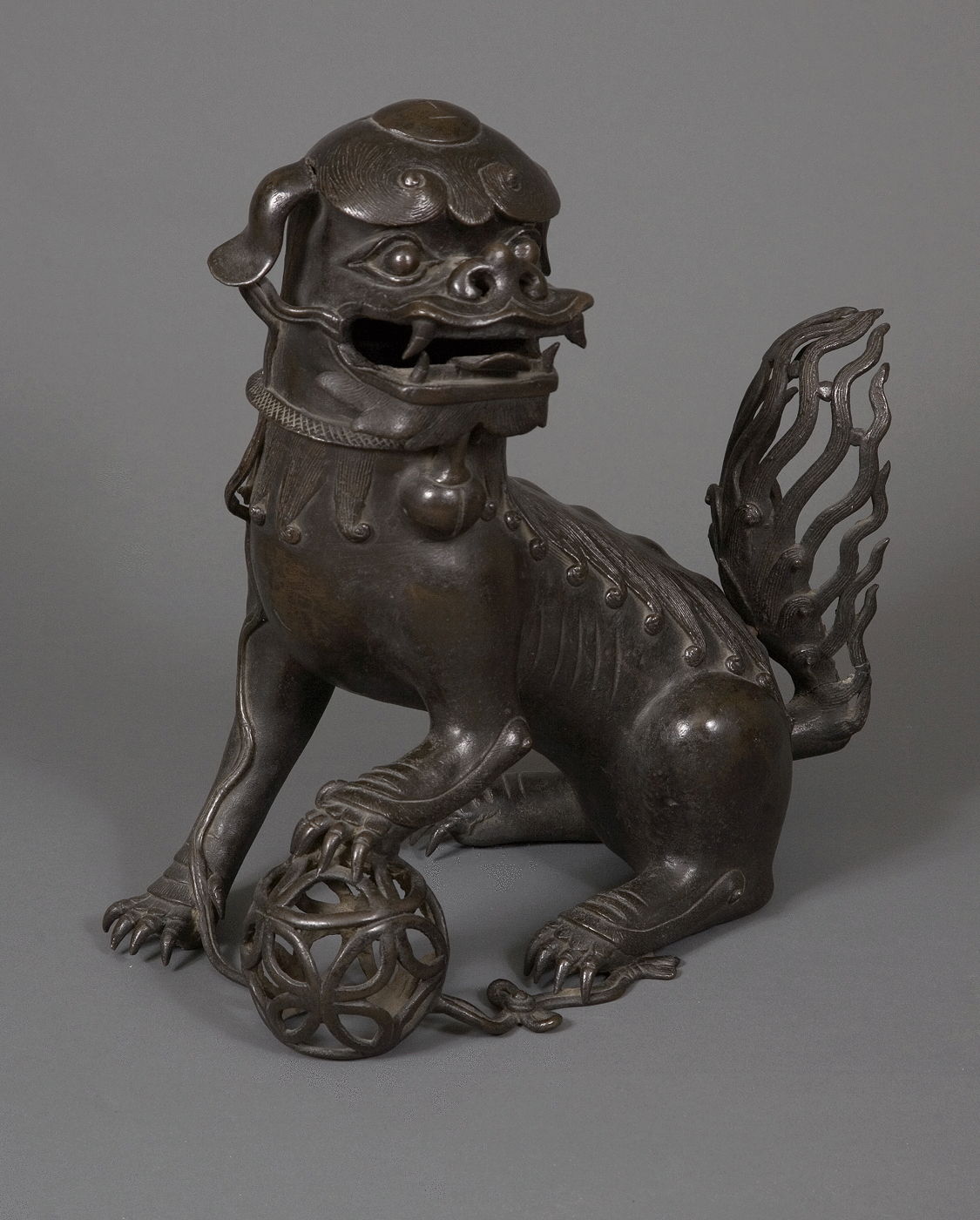28. A Chinese Bronze Censer In The Form Of A Buddhistic Lion
SOLD
China | 1600 - 1699
A CHINESE BRONZE CENSER IN THE FORM OF A BUDDHISTIC LION.
Ming Dynasty.
Early 17th Century.
Height: 16” (40cm)
Length: 14” (35.5cm)
This charmingly serene bronze lion in a seated pose with a front paw raised on a pierced ball.
Censers are a type of vessel for burning incense. In many cultures burning incense has spiritual and religious connotations which influence the design and decoration of the censer.
The lion is one of Buddhism’s most potent symbols. Traditionally the lion is associated with regality, strength and power. It is therefore an appropriate symbol of Buddha who, tradition has it, was a regal prince. As Buddhist priests and monks from India they brought with them stories of stone Asiatic lions found in India guarding the Buddhist temples, monasteries and palaces. The Chinese sculptors modelled lion statues after native dogs for guarding their temples and palaces, as nobody in ancient China had ever seen a lion. Lions of Fo are often created in pairs, with the male sitting on the left playing with a ball and the female on the right with a cub.
Collections: Archive
Share:


